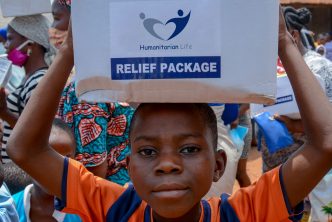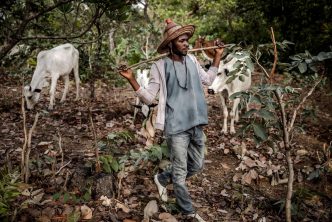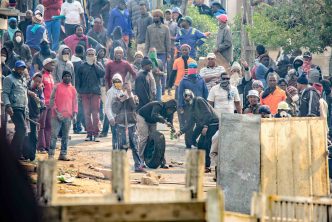How can Nations Leverage the Media, Women, and Youth to Build Resilient Communities?
The Boko Haram insurgency and the subsequent counterinsurgency operations in the Northeast have resulted in nearly 30,000 fatalities, over two million displacements, and more than 10.6 million persons relying on humanitarian assistance to survive. The humanitarian crisis has prompted the government’s interventions, such as establishing the North-East Development Commission and Operation Safe Corridor. Among many other objectives, these interventions aim to ensure recovery, stabilisation, and rehabilitation of survivors’ lives and the region’s local economy.
As laudable as the intervention programmes are, they are inadequate. The insurgency and counterinsurgency have continued, with many survivors still grappling with the trauma of living through the conflict, desiring psychological support and any rays of hope for a return to normalcy.
Against this background, it is imperative to explore alternative or complementary resilience models to guarantee restoration and stabilisation. This essay outlines the components for building resilient communities in Northeast Nigeria: media, women, and youth.
Speak Peace
The media can be a driver of both conflict and peace (Bertz, 2018). Various conflict parties have used media channels to stoke the flame of ethnic tension through the promotion of hate speech. The oft-cited example is of the 1994 Rwandan Genocide, where over 800,000 people died in 100 days. The then-Hutu government used the Radio Télévision Libre des Mille Collines (RTLM – French for “Thousand Hills Free Radio and Television”) and the “Kangura,” an extremist magazine, to push anti-Tutsi propaganda. Similar examples can be drawn from the former Republic of Yugoslavia, the former Soviet Republic of Georgia, and even the Nazis in the build-up to the holocaust. There is compelling evidence of media abuse in vulnerable societies.
The media has immense potential as an agent of peace by providing information and education and playing its role as a watchdog organisation. Similarly, the media can help douse tensions by providing safe-spaces for aggrieved community members to voice their opinions on divisive issues.
Where the media occupies space in conflict-affected communities, there is the potential for trust, self-worth, and healing in the population during and after conflict. Through its essential functions, the media has the potential to prevent a resurgence of violent conflicts in vulnerable communities. The media can provide early warning signals and flag red alert zones to help people in the conflict areas avoid danger (Idris, 2020). Through constructive criticisms, informed opinions, and references to lessons drawn from elsewhere, the media can help people in conflict situations articulate viable alternatives for building and strengthening their lives and local structures. These factors are imperative for community resilience.
Furthermore, the media space can counter distorted messages intended to make people desperate, restless, and gullible to manipulations. Even in conflict situations, well-informed people can make informed decisions, strengthen their societies, support the reconstruction of the economic and political structure as well as promote a positive outlook on the future. The media has played these various conflict transformation roles in conflict and post-conflict situations in many countries such as Ethiopia and Nepal. However, according to Bertz (2018), factors such as safety, economic resources, internet, and mobile access impact the media’s role in conflict-affected areas.
Youthful Energy
Can the youth in Northeast Nigeria play a role in building resilience in their vulnerable communities? Aged between 15 and 35 years, they constitute the largest segment of the population and the most energetic. According to Obasanjo and Mabogunje (1992), they are in that age (between childhood and adulthood) where they are mobile in thought and transitional in their worldview.
Granted, the youth account for a significant proportion of the insurgents, but they are also the primary victims. A blog post by Conciliation Resources validates that young people “are largely excluded from political, social, and economic decision-making and as a result, have become increasingly disengaged from society.” This disillusionment with society pushes some of them into the arms of the insurgents. The suspicion and ostracisation of this group mean that they are excluded from any credible efforts to build resilience in the region.
The government, development partners, and community leaders can work with the youth to support resilience efforts in Northeast Nigeria. Being relatively alienated from the status quo, they are anxious about their future and how to change society. With their limited responsibilities, they are risk-takers and eager to make an impact. Some of the youth in the Boko Haram-affected communities constituted themselves into the Civilian Joint Task Force to complement efforts of the understaffed and seemingly fatigued Nigerian Military. The youth are effective in their use of local intelligence and rudimentary arms to protect their civilian neighbours. It is their future, and they are willing to work for it.
Mothers’ Instincts
As the youth, the women are at the heart of community resilience efforts. Women make up a significant proportion of the population. By their physiology, they are the givers and nurturers of life. The social responsibility that comes with their biological functions makes women a peculiar force for building resilience.
Apart from serving as a vehicle for nurturing human life, they are equally endowed agents for fostering wholesome political, social, and economic development in societies (Obasanjo and Mabogunje, 1992). Besides their physiological and social functions, women and girls bear a high cost of community conflicts. While men may account for higher fatalities, women may be more vulnerable to humanitarian tragedies. For example, as of 2019, out of the 7.1 million people relying on humanitarian assistance for survival in the Northeast, women and girls accounted for 4.6 million representing 64.8 percent.
Women have suffered severe adversities as mothers, abductees, displaced persons, and associates or wives of Boko Haram militants. As mothers, they contend with the psychological trauma of losing their husbands and children. This challenge is worsened by the daunting task of being sudden widows and breadwinners of their families. As abductees, like hundreds of Chibok and Dapchi schoolgirls, they have been sexually abused, forced into marriage, and used as arm couriers, spies, and suicide bombers. As ex-wives or former associates of the jihadist sect members, they are subjected to traumatic experiences of rejection, ostracism, or labelling.
Women do not receive as much attention or support as they deserve, given the cost of the conflict and their contributions to building resilience. Even under the amnesty programmes, women did not receive due consideration like the men in the Operation Safe Corridor programme. Being victimised in the conflict and alienated from social interventions, women and girls remain anxious for change.
Weaving the Cord
A study by Nextier SPD in 2019 indicated that women and the youth have contributed to entrenching resilience in the Northeast by carrying out surveillance and intelligence gathering. It shows that women and the youth can play essential roles in helping their communities survive the realities of the Northeast conflict. The jihadist violence may have posed harsh outcomes for them; however, it has also created new roles for these groups. The shortage of human and material resources in war-impacted communities elicited the need for an all-inclusive effort to build resilience against the insurgency. Women and youth engagement as peacebuilders and community actors have been tremendous in building resilience and coping mechanisms in some northeastern Nigerian communities. The media has been significantly instrumental in disseminating timely information that helped communities to prepare against attacks. For example, the collaboration between the three actors in information gathering and dissemination has helped them perform their new roles in building community resilience.
The media, youth, and women are the three strands of a cord required to build resilience in Nigeria’s insurgency-ravaged Northeast region. The solution elements include:
1. In most conflicts today, women, children, and youths are the primary victims, with youths being lured into becoming perpetrators of violence. The media can help women and the youth to amplify their voices and increase their self-worth through positive messaging. For instance, a downplaying of terrorism by deemphasising fear and uncertain futures will help the everyday lives of affected communities (Altheide,2007).
2. The media should drive counter-narratives and not indirectly give terrorists the popularity they seek. According to the Parliamentary Assembly of Council of Europe, “modern terrorism is media terrorism” because the media is attracted to extreme violent acts because of its fascination to the public. Although the media should report major events, such reports should not excite such terror activities.
3. Women and youth can use media spaces (including WhatsApp, Twitter, and SMS) to create early warning signals for their community. During the post-election violence in Kenya in 2007, information via SMS and Twitter provided instructions to the people on the high-risk zones to avoid (Idris, 2020). As part of their Corporate Social Responsibility (CRS), telecommunication firms should work with security agents and local communities in North-East Nigeria in sending out free alert messages.
4. The media can build the capacities and change women and youth attitudes, even those who are direct victims of Boko Haram. Media programmes, such as street theatres, peace songs, or comics, can strengthen vulnerable communities. According to Idris (2020), similar programmes dealt with conflict situations in Angola, Burundi, Greece, Sierra Leone, and Turkey.
In conclusion, the three actors, media, women, and youth, have strong adaptive and reactive capacities that translate into individual and community resilience when properly explored and supported. From the examples that have been presented, it is clear that the media, women, and youths are mutually reinforcing peacebuilders in many communities. While consideration for the needs, capabilities, and priorities of the youth and women is crucial for effective and sustainable rehabilitation work, the media can help promote a better understanding of their conditions, leading to better-designed interventions.







